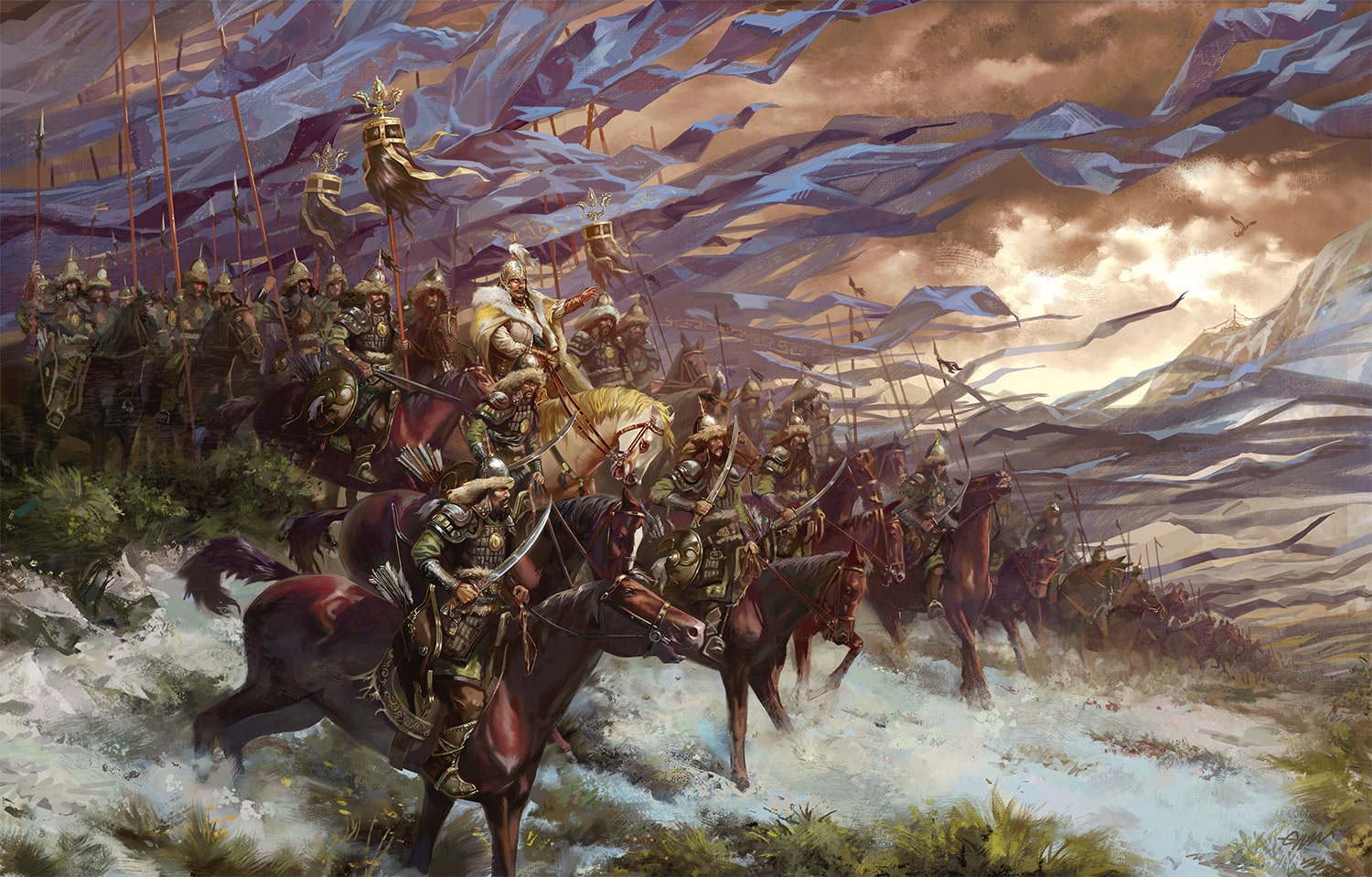
30 interesting facts about The Mongol Empire
- 👁️ 298
he Mongol Empire, established by Genghis Khan in 1206, is renowned for becoming one of the largest contiguous empires in history. It expanded across Asia and Europe under a highly efficient and organized military and administrative system. The empire facilitated trade and cultural exchanges across the Silk Road, connecting the East and the West in unprecedented ways. Despite its reputation for brutal conquests, the Mongol Empire also fostered significant economic, cultural, and political interactions among diverse civilizations. The impact of this vast empire continues to be studied for its influence on the course of world history.
- Genghis Khan united the Mongolian tribes in 1206 and began an era of conquest that would lead to the largest contiguous land empire in history.
- At its peak, the Mongol Empire covered over 24 million square kilometers, stretching from Eastern Europe across Asia to the Sea of Japan.
- The empire was known for its exceptionally organized military structure, with armies divided into groups based on the decimal system.
- Mongol warriors were highly skilled horsemen and archers, often starting military training at a young age.
- The Mongols implemented a communication system known as the Yam, which used relay stations to deliver messages quickly across vast distances.
- Under the rule of Genghis Khan, the Mongols adopted a written language, the Classical Mongolian script, to administer its vast empire.
- The legal code, known as the Yassa, was created by Genghis Khan to establish law and order within his empire.
- The empire practiced religious tolerance, allowing its subjects to worship freely, which was unusual for empires of the time.
- The Pax Mongolica refers to the period of relative peace and stability across the Mongol Empire, which facilitated trade and intellectual exchange.
- The Silk Road thrived under Mongol rule as they provided security and infrastructure, boosting trade between the East and the West.
- The Mongols were instrumental in transmitting technologies such as gunpowder and printing from China to Europe.
- Kublai Khan, grandson of Genghis Khan, established the Yuan Dynasty in China in 1271, further expanding the empire’s influence in East Asia.
- The empire’s decline began due to internal conflicts, succession crises, and the inability to maintain such a vast territory.
- The Black Death also played a significant role in weakening the Mongol control as it decimated populations along the trade routes.
- The Mongols attempted to invade Japan twice in 1274 and 1281 but were thwarted by typhoons, known as kamikaze, or “divine winds.”
- Genghis Khan’s death in 1227 led to the division of the empire among his sons, creating several khanates that eventually fragmented.
- The Mongols were known for their harsh treatment of conquered cities that resisted, often resulting in mass slaughters.
- However, they also contributed to cultural exchanges by bringing artists, craftsmen, and scholars from conquered regions to their capital at Karakorum.
- The Golden Horde, one of the four major divisions of the Mongol Empire, ruled over parts of Russia, Ukraine, and Kazakhstan.
- Marco Polo’s travels to the court of Kublai Khan in the late 13th century are one of the best-documented encounters of Europeans with the Mongol Empire.
- The Mongol invasion of Persia resulted in significant changes in the region’s administrative and cultural landscape.
- The Ilkhanate, another division of the empire, converted to Islam in the late 13th century, influencing the religious map of the Middle East.
- Despite their reputation for violence, the Mongols also fostered significant advancements in astronomy, medicine, and mathematics.
- The Battle of Ain Jalut in 1260 was one of the first major military defeats for the Mongols, inflicted by the Mamluks of Egypt.
- The Mongol Empire’s impact on Europe included the introduction of diplomatic immunity, a practice that protected foreign envoys.
- Genghis Khan’s emphasis on meritocracy allowed individuals of diverse backgrounds to rise to power based on abilities, not lineage.
- The Mongol postal system was so efficient that it could cover up to 200 miles in a day using fresh horses.
- The empire’s decline made way for the rise of the Ottoman Empire, which would eventually absorb its remaining territories in the Middle East.
- The genetic legacy of Genghis Khan is notable, with studies suggesting that a significant portion of men in former Mongol territories share Y-chromosomal DNA.
- The last Mongol khanate, the Crimean Khanate, survived until 1783 when it was annexed by the Russian Empire.
The Mongol Empire’s story is a testament to how a nomadic tribe from the steppes of Central Asia could forge one of the most powerful empires in history through conquest and skilled administration. Its legacy is complex, marked by both its role in promoting cross-cultural connections and its brutal military campaigns. The empire’s influence on the course of history, from Europe to Asia, showcases the profound impact of Mongol governance and its enduring relevance in studies of historical connectivity and transformation.
he Mongol Empire, established by Genghis Khan in 1206, is renowned for becoming one of the largest contiguous empires in history. It expanded across Asia and Europe under a highly efficient and organized military and administrative system. The empire facilitated trade and cultural exchanges across the Silk Road, connecting the…